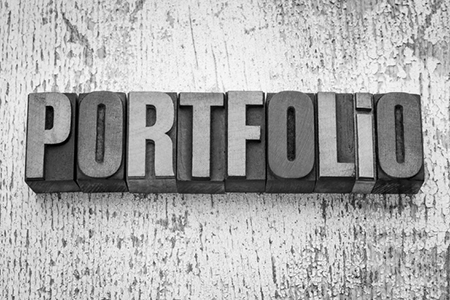Top Tips for a Killer Design Portfolio
As a creative professional you live and die by the quality of your design portfolio; it sums you and your work up and is the first port of call for anyone looking to hire or commission you. It needs to show the breadth of your output, your skills and experience, how you generate and execute ideas, basically your whole creative process.
When done well, a creative’s portfolio should impress and surprise the viewer, demonstrating how you and your work will be an invaluable asset to the viewer, whether that be as a full time member of staff or on a freelance basis.
There are lots of varying opinions on exactly what a design portfolio should contain but there are some golden rules and theories that will set you in good stead when putting yours together.
All killer, no filler
This should really be common sense, but you’d be surprised how often it isn’t followed. Only ever show your very best work in your portfolio and if you aren’t 100 per cent happy with the outcome then don’t feature it. It’s fine to show a creative journey through your work but people don’t want to see way back to your college years (unless of course you’re a recent graduate) and the old adage that ‘you’re only as good as your last job’ should spring to mind. It’s often hard to self-edit, but it’s important to be quite ruthless when selecting the work to ensure that all of it is up to scratch and of a standard that you’re happy with.
Start and end with key pieces
This is something that I learned quite early on: to begin with a really strong killer piece that will grab their attention and then finish on a similarly striking talking point that will leave them wanting more. It’s easy to see how this can apply to a traditional print portfolio, but the same thinking can be applied to an iPad folio or indeed a simple PDF attachment in an email.
Leave them wanting more
It’s important to leave the viewer wanting more, especially on initial application as you don’t want to arrive at a meeting or interview with nothing left to talk about. Also, remember not to overdo it in certain areas of your portfolio.
Let the work speak for itself.
Don’t be tempted to over-embellish your portfolio. Allow the work to do the talking by making projects easy to view in large formats.
Curate for the job you want
If sending out a PDF sampler or curating your portfolio for an interview, always make a bespoke selection of work each time that’s tailored to that specific client. Although it may be the thing that you’re most proud of, a potential corporate client probably isn’t interested in the experimental fashion shoot you’ve just worked on. This applies to whole selections of work on websites as well; only show the kind of work that you want to get commissioned for or hired to create.
Self-initiated work
I’ve lost count of the amount of times I’ve heard fellow creatives state how important self-initiated work is to their practice. Potential employers are also interested in seeing you flex your creative muscles and express your individual voice, to the point that I actually saw it specifically stated as a requirement on a job ad.
Including self-initiated work helps the employer to see where your passions lie and the kind of work that you’d choose to do if not restricted by a tight client brief. Also, unless you’re at a senior/art director level then it’s sometimes hard to tell how integral a role someone played within the creation of a large project, and whether or not they were working to strict guidelines and design systems.
Show your working
Along with seeing self-initiated projects, it can also be valuable to show your working and the journey you went through to realise the outcome to a given brief. This may be the journey from marque creation to implementation within a branding project or the craft based process behind an analogue piece of work.
Be confident and tell your story
Finally, the key to any portfolio presentation is the ability to deliver and talk confidently about the work within it. There’s nothing worse than going through someones portfolio who has little or nothing to say about their work. Ensure that all the pieces that you include are ones that you’re very proud of and can talk confidently and enthusiastically about in a meeting, explaining the back story and journey you went through to get there.
Go get em!





